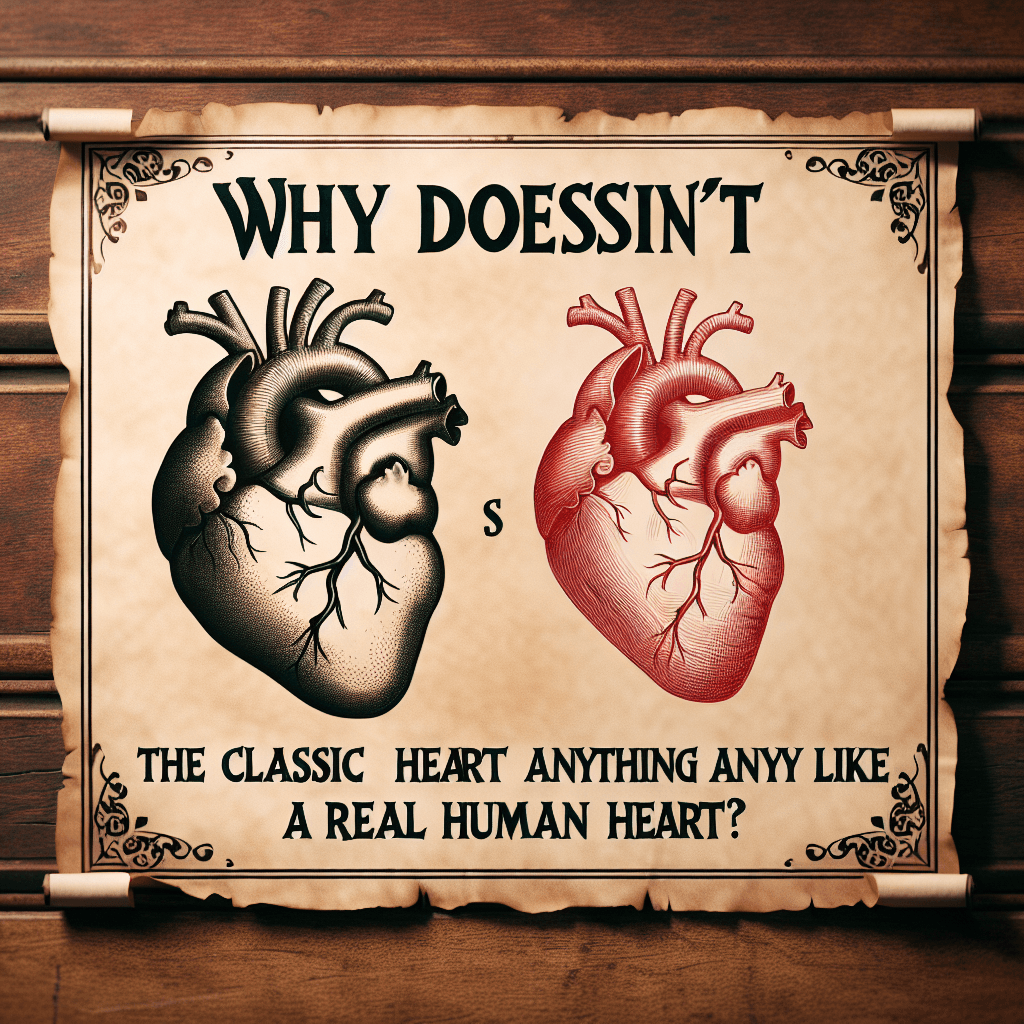Why doesn't the classic heart symbol look anything like a real human heart
The symbol you've been drawing your whole life has a bizarre and surprisingly spicy history that has almost nothing to do with the organ actually beating in your chest.


Too Long; Didn't Read
TLDR: The heart symbol isn't based on a human heart. Its shape likely evolved from ancient symbols for love and fertility, such as the seed pod of the now-extinct silphium plant, ivy leaves, or stylized female anatomy.
The Heart of the Matter: Why Doesn't the Classic Heart Symbol Look Anything Like a Real Human Heart?
From Valentine's Day cards to the "like" button on social media, the classic heart symbol (♥) is one of the most recognizable icons on the planet. It's the universal shorthand for love, affection, and emotion. But have you ever stopped to wonder why this symmetrical, stylized shape looks nothing like the fist-sized, asymmetrical organ pumping blood in your chest? The real human heart is a complex, muscular marvel of biology, not a smooth, simple icon. The disconnect isn't an oversight; it's a fascinating journey through history, botany, and art. This post will explore the leading theories behind the origins of the heart symbol and uncover why the shape we associate with love is so anatomically incorrect.
A Tale of Two Hearts: The Symbol vs. The Organ
Before we explore the historical origins, it's important to understand just how different the symbol and the organ are.
- The Real Human Heart: This is a powerful, asymmetrical organ, tilted slightly in the chest. It's a complex system of four chambers, arteries, and veins, resembling a rounded cone or a lopsided pear more than anything else. Its primary function is physiological—to pump blood throughout the body.
- The Heart Symbol (♥): This is a perfectly symmetrical ideogram with two rounded lobes at the top meeting at a point at the bottom. It represents the concept of the heart as the seat of emotion, love, and passion.
The ancient Greeks and Romans believed the heart was the center of memory, passion, and intelligence, but their anatomical knowledge was limited. The influential physician Galen, who based his studies on animal dissections, described the human heart as being shaped somewhat like a pinecone or an upside-down leaf. This early, vague understanding of anatomy is a key piece of the puzzle.
The Roots of the Symbol: Ancient Theories and Botanical Clues
There is no single, definitive answer to where the heart symbol came from, but historians have pieced together several compelling theories that link its origins more to nature and commerce than to medicine.
The Silphium Seed Pod Theory
One of the most popular and intriguing theories points to a now-extinct plant called Silphium. This plant grew only along a narrow coastal region of North Africa, near the Greek colony of Cyrene (in modern-day Libya). Silphium was a miracle plant to the ancient world; its resin was used as a cough syrup, a perfume, and a popular food seasoning.
Most importantly, it was widely used as an effective form of birth control. This strong association with sex and love made the plant incredibly valuable. The city of Cyrene, which held a monopoly on the Silphium trade, even stamped the shape of its heart-like seed pod onto its coins. This shape is a near-perfect match for the heart symbol we use today. Over-harvesting eventually drove the plant to extinction by the first century A.D., but its iconic shape may have lived on.
Inspired by Nature: Ivy and Fig Leaves
Another strong theory suggests the symbol evolved from the stylized depiction of leaves. Ivy leaves, in particular, were prominent in the art of the ancient Greeks and Romans. The ivy vine was associated with Dionysus (Bacchus in Rome), the god of wine, passion, and ecstasy. Because of its resilient, clinging nature, ivy also came to represent fidelity and eternal love, and its distinctive shape was often used in decorative art to symbolize these feelings. Similarly, the shape of fig leaves was also linked to sensuality and could have been another botanical influence.
A Clumsy Attempt at Anatomy?
A third possibility is that the symbol is a highly stylized and misunderstood representation of a real heart, passed down from medieval times. Following the vague anatomical descriptions of Aristotle and Galen, who described the heart as a three-chambered organ with a dent in the middle, artists may have attempted to draw it. When trying to depict the "seat of the soul" in a visually appealing way, they might have taken the basic idea of a rounded top with an indentation and simplified it into the symmetrical, two-lobed shape we recognize. Over centuries of reproduction, this artistic interpretation became the standardized symbol.
Conclusion
The classic heart symbol is a perfect example of how an icon's power lies in its meaning, not its literal accuracy. While it fails as an anatomical diagram, it succeeds brilliantly as a representation of love, emotion, and connection. Whether its true origin lies in the seed pod of an ancient contraceptive plant, the decorative leaves of an ivy vine, or a medieval artist's stylized drawing, the heart shape has a rich and complex history. The next time you send a heart emoji or see the iconic symbol, you’ll know you’re sharing a piece of history that is more about the abstract human experience of love than the biological pump in our chests.


